-
 Bitcoin
Bitcoin $115000
0.12% -
 Ethereum
Ethereum $3701
4.50% -
 XRP
XRP $3.081
2.99% -
 Tether USDt
Tether USDt $0.0000
-0.01% -
 BNB
BNB $767.9
1.45% -
 Solana
Solana $169.5
3.13% -
 USDC
USDC $0.9999
0.01% -
 Dogecoin
Dogecoin $0.2106
4.30% -
 TRON
TRON $0.3334
1.62% -
 Cardano
Cardano $0.7564
2.54% -
 Stellar
Stellar $0.4165
0.76% -
 Hyperliquid
Hyperliquid $38.75
0.25% -
 Sui
Sui $3.593
3.00% -
 Chainlink
Chainlink $17.08
3.59% -
 Bitcoin Cash
Bitcoin Cash $573.6
4.35% -
 Hedera
Hedera $0.2508
-0.84% -
 Avalanche
Avalanche $23.07
6.46% -
 Ethena USDe
Ethena USDe $1.001
-0.02% -
 Litecoin
Litecoin $120.8
8.17% -
 UNUS SED LEO
UNUS SED LEO $8.943
-0.32% -
 Toncoin
Toncoin $3.400
-5.60% -
 Shiba Inu
Shiba Inu $0.00001255
1.54% -
 Uniswap
Uniswap $9.908
6.32% -
 Polkadot
Polkadot $3.718
2.10% -
 Monero
Monero $303.0
-0.74% -
 Dai
Dai $0.9999
-0.02% -
 Bitget Token
Bitget Token $4.392
0.91% -
 Cronos
Cronos $0.1403
6.31% -
 Pepe
Pepe $0.00001076
1.13% -
 Aave
Aave $267.2
1.80%
What is a flash loan and how does it enable unsecured lending?
Flash loans enable unsecured borrowing on DeFi platforms, allowing for arbitrage and complex strategies, but they carry risks like high fees and potential for attacks.
Apr 13, 2025 at 08:36 pm
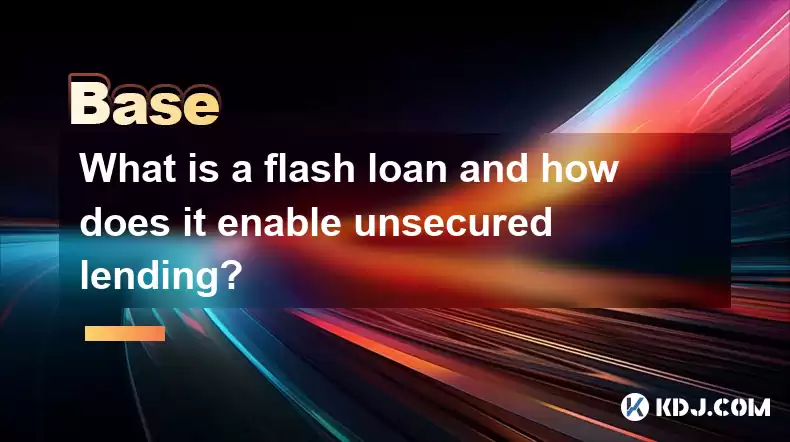
A flash loan is a type of unsecured lending that has become popular within the cryptocurrency space, particularly on decentralized finance (DeFi) platforms. Flash loans are unique because they allow borrowers to take out loans without any collateral, and the entire loan process, from borrowing to repayment, must be completed within a single blockchain transaction. This innovative financial tool enables a range of sophisticated trading and arbitrage strategies, but it also comes with significant risks that users must be aware of.
Flash loans operate on the principle of atomicity, meaning that the loan transaction either completes in full or not at all. If the borrower cannot repay the loan within the same transaction, the transaction is reverted, and the loan is effectively canceled. This mechanism ensures that the lender faces no risk of default, as the loan never technically leaves the lender's control if it is not repaid.
To understand how flash loans work, it's important to delve into the mechanics of a typical flash loan transaction. A flash loan begins with a borrower requesting a loan from a smart contract on a DeFi platform. The smart contract then instantly transfers the requested amount of cryptocurrency to the borrower's wallet. The borrower then uses these funds to execute a series of transactions, such as arbitrage trades or liquidity provision, within the same blockchain transaction. If these transactions are successful and generate enough profit to cover the loan amount plus any fees, the borrower repays the loan back to the smart contract. If the transactions do not yield the required profit, the entire transaction is reverted, and the loan is nullified.
The ability to borrow without collateral makes flash loans particularly attractive for traders and arbitrageurs. For instance, a trader might use a flash loan to exploit price differences between two exchanges. By borrowing a large amount of cryptocurrency through a flash loan, the trader can buy the asset at a lower price on one exchange and sell it at a higher price on another, all within the same transaction. If the arbitrage is successful, the trader repays the loan and pockets the profit. If the arbitrage fails, the transaction is reverted, and the trader incurs no loss.
Flash loans also enable more complex financial strategies, such as self-liquidation and collateral swaps. In a self-liquidation scenario, a borrower might use a flash loan to repay a loan on one platform and then immediately take out a new loan on another platform with better terms. This can be particularly useful for managing debt across different DeFi protocols. Similarly, collateral swaps involve using a flash loan to swap one type of collateral for another, potentially improving the borrower's position in the market.
However, the use of flash loans is not without risks. Because flash loans do not require collateral, they can be exploited for malicious purposes, such as flash loan attacks. In a flash loan attack, a hacker might borrow a large amount of cryptocurrency and use it to manipulate the price of a token on a DeFi platform, triggering a cascade of liquidations that benefit the attacker. Such attacks have led to significant losses for DeFi platforms and their users, highlighting the need for robust security measures and careful risk management.
To mitigate these risks, users must thoroughly understand the smart contracts they interact with and the potential vulnerabilities they may contain. It's crucial to review the code of the smart contract and any associated audits to ensure that it is secure. Additionally, users should be aware of the potential for price manipulation and take steps to protect their positions, such as setting appropriate slippage tolerance and monitoring market conditions closely.
Another important consideration is the cost of using flash loans. While flash loans do not require collateral, they often come with high transaction fees due to the complexity of the transactions involved. These fees can eat into the potential profits of a flash loan strategy, so it's essential to factor them into any calculations before executing a flash loan.
In practice, executing a flash loan involves several steps that users must follow carefully. Here is a detailed guide on how to execute a flash loan on a typical DeFi platform:
- Choose a DeFi platform that supports flash loans, such as Aave or dYdX. Research the platform's reputation and security measures to ensure it is trustworthy.
- Connect your wallet to the DeFi platform. Ensure that your wallet is compatible with the platform and that you have enough funds to cover any transaction fees.
- Select the type of cryptocurrency you want to borrow and the amount you need. Be sure to calculate the potential profits and fees associated with the loan.
- Initiate the flash loan request through the platform's interface. This will trigger a smart contract to transfer the requested amount of cryptocurrency to your wallet.
- Execute your intended transactions within the same blockchain transaction. This might involve arbitrage trades, liquidity provision, or other financial strategies.
- If the transactions are successful and generate enough profit, repay the loan back to the smart contract along with any associated fees.
- If the transactions do not yield the required profit, the entire transaction will be reverted, and the loan will be nullified.
Flash loans have opened up new possibilities for unsecured lending within the cryptocurrency ecosystem. By allowing borrowers to take out loans without collateral, flash loans have enabled a range of innovative financial strategies that were previously impossible. However, the risks associated with flash loans, such as the potential for flash loan attacks and high transaction fees, mean that users must approach them with caution and a thorough understanding of the underlying mechanics.
How Do Flash Loans Differ from Traditional Loans?
Flash loans differ significantly from traditional loans in several key ways. The most notable difference is that flash loans do not require collateral, whereas traditional loans typically require borrowers to provide some form of security, such as property or cash. This lack of collateral makes flash loans more accessible but also more risky.
Another key difference is the speed and automation of flash loans. Traditional loans often involve lengthy application processes and manual approval, whereas flash loans are executed instantly through smart contracts. This automation allows for rapid execution of complex financial strategies but also increases the potential for errors and vulnerabilities.
The repayment terms of flash loans are also unique. Traditional loans have fixed repayment schedules that can span months or years, while flash loans must be repaid within a single blockchain transaction. This requirement for immediate repayment adds a layer of complexity to flash loan strategies but also ensures that lenders face no risk of default.
What Are the Common Use Cases for Flash Loans?
Flash loans are used for a variety of purposes within the cryptocurrency ecosystem. One of the most common use cases is arbitrage trading, where traders use flash loans to exploit price differences between different exchanges. By borrowing a large amount of cryptocurrency through a flash loan, traders can buy an asset at a lower price on one exchange and sell it at a higher price on another, all within the same transaction.
Another common use case is liquidity provision. Some DeFi platforms allow users to provide liquidity to their pools using flash loans. By borrowing cryptocurrency through a flash loan, users can add liquidity to a pool and earn trading fees, all within the same transaction.
Flash loans are also used for self-liquidation and collateral swaps. In a self-liquidation scenario, a borrower might use a flash loan to repay a loan on one platform and then immediately take out a new loan on another platform with better terms. Similarly, collateral swaps involve using a flash loan to swap one type of collateral for another, potentially improving the borrower's position in the market.
What Are the Risks Associated with Flash Loans?
The use of flash loans comes with several risks that users must be aware of. One of the most significant risks is the potential for flash loan attacks. In a flash loan attack, a hacker might borrow a large amount of cryptocurrency and use it to manipulate the price of a token on a DeFi platform, triggering a cascade of liquidations that benefit the attacker. Such attacks have led to significant losses for DeFi platforms and their users.
Another risk is the high transaction fees associated with flash loans. Because flash loans involve complex transactions that must be executed within a single blockchain transaction, they often come with high gas fees. These fees can eat into the potential profits of a flash loan strategy, so it's essential to factor them into any calculations before executing a flash loan.
Users must also be aware of the potential for smart contract vulnerabilities. Because flash loans are executed through smart contracts, any vulnerabilities in the code can be exploited by malicious actors. It's crucial to review the code of the smart contract and any associated audits to ensure that it is secure.
How Can Users Mitigate the Risks of Flash Loans?
To mitigate the risks associated with flash loans, users must take several precautions. One of the most important steps is to thoroughly understand the smart contracts they interact with. This involves reviewing the code of the smart contract and any associated audits to ensure that it is secure. Users should also be aware of the potential for price manipulation and take steps to protect their positions, such as setting appropriate slippage tolerance and monitoring market conditions closely.
Another important precaution is to factor in the cost of using flash loans. High transaction fees can significantly impact the profitability of a flash loan strategy, so it's essential to calculate these costs before executing a flash loan. Users should also consider the potential for smart contract vulnerabilities and take steps to protect themselves, such as using reputable DeFi platforms and keeping their software up to date.
Finally, users should approach flash loans with caution and a thorough understanding of the underlying mechanics. By taking these precautions, users can minimize the risks associated with flash loans and maximize their potential benefits.
Frequently Asked Questions
Q: Can flash loans be used for purposes other than trading and arbitrage?
A: Yes, flash loans can be used for a variety of purposes beyond trading and arbitrage. They can be used for liquidity provision, self-liquidation, collateral swaps, and even for testing and developing new DeFi protocols. The flexibility of flash loans makes them a versatile tool within the cryptocurrency ecosystem.
Q: Are flash loans available on all DeFi platforms?
A: No, not all DeFi platforms support flash loans. Some of the most popular platforms that offer flash loans include Aave, dYdX, and Uniswap. Users should research the specific platforms they are interested in to determine if flash loans are available and what the associated terms and conditions are.
Q: How do flash loans impact the overall stability of DeFi platforms?
A: Flash loans can have both positive and negative impacts on the stability of DeFi platforms. On the positive side, they can increase liquidity and enable more efficient markets. However, they can also be used for malicious purposes, such as flash loan attacks, which can destabilize platforms and lead to significant losses. As a result, DeFi platforms must implement robust security measures to mitigate these risks.
Q: What are the regulatory implications of flash loans?
A: The regulatory implications of flash loans are still evolving, as they are a relatively new financial tool. Some regulators are concerned about the potential for flash loans to be used for market manipulation and other illicit activities. As a result, DeFi platforms that offer flash loans may face increased scrutiny and potential regulatory action in the future.
Disclaimer:info@kdj.com
The information provided is not trading advice. kdj.com does not assume any responsibility for any investments made based on the information provided in this article. Cryptocurrencies are highly volatile and it is highly recommended that you invest with caution after thorough research!
If you believe that the content used on this website infringes your copyright, please contact us immediately (info@kdj.com) and we will delete it promptly.
- Bitcoin, Fed Rate Cut, and Crypto Stocks: A New Yorker's Take
- 2025-08-05 14:50:12
- Police, Cryptocurrency, Bitcoin Windfall: Unexpected Gains and Cautionary Tales
- 2025-08-05 15:30:12
- MAGACOIN: The Next Shiba Inu ROI? A Crypto Presale Deep Dive
- 2025-08-05 15:30:12
- Bitcoin, Kiyosaki, and the August Curse: Will History Repeat?
- 2025-08-05 14:50:12
- Crypto Airdrops: Your August 2025 Guide to Free Tokens & Opportunities
- 2025-08-05 13:45:13
- Luxury Dining Reimagined: St. Regis Singapore & Marriott's Culinary Celebration
- 2025-08-05 13:45:13
Related knowledge
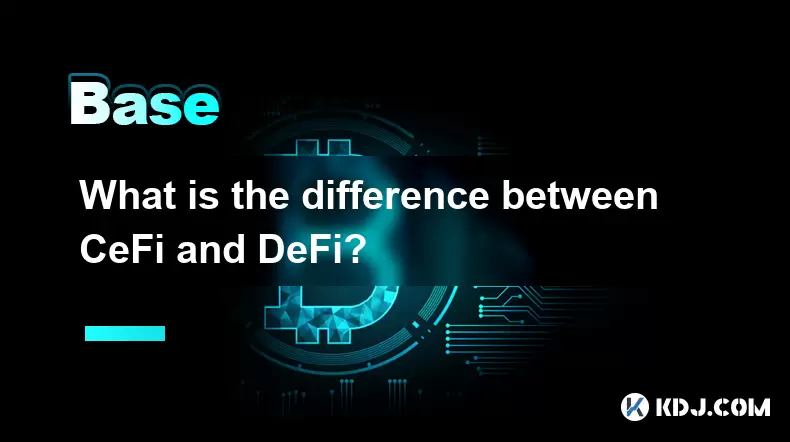
What is the difference between CeFi and DeFi?
Jul 22,2025 at 12:28am
Understanding CeFi and DeFiIn the world of cryptocurrency, CeFi (Centralized Finance) and DeFi (Decentralized Finance) represent two distinct financia...
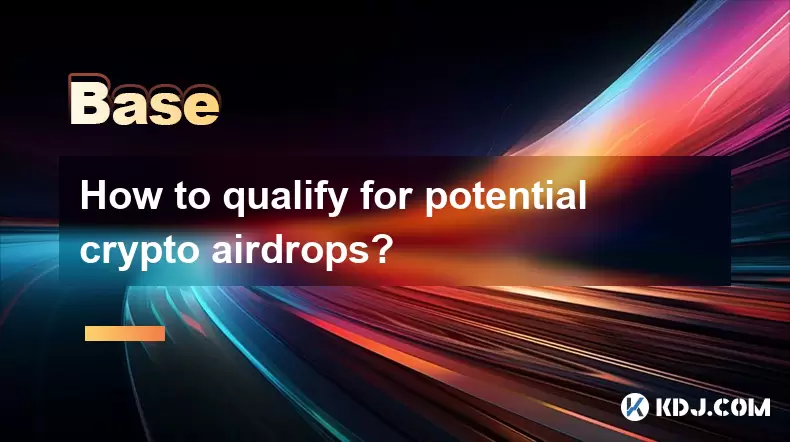
How to qualify for potential crypto airdrops?
Jul 23,2025 at 06:49am
Understanding What Crypto Airdrops AreCrypto airdrops refer to the distribution of free tokens or coins to a large number of wallet addresses, often u...
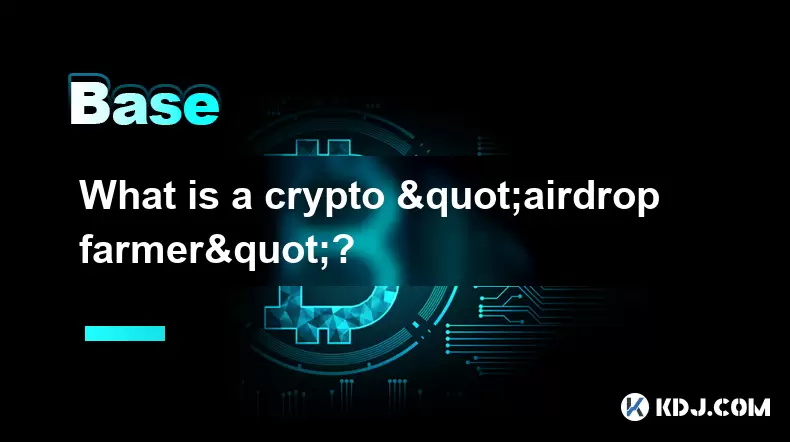
What is a crypto "airdrop farmer"?
Jul 24,2025 at 10:22pm
Understanding the Role of a Crypto 'Airdrop Farmer'A crypto 'airdrop farmer' refers to an individual who actively participates in cryptocurrency airdr...
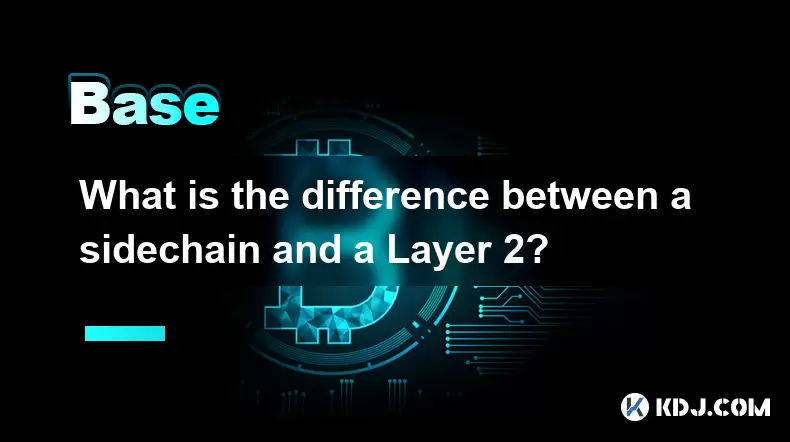
What is the difference between a sidechain and a Layer 2?
Jul 20,2025 at 11:35pm
Understanding the Concept of SidechainsA sidechain is a separate blockchain that runs parallel to the main blockchain, typically the mainnet of a cryp...
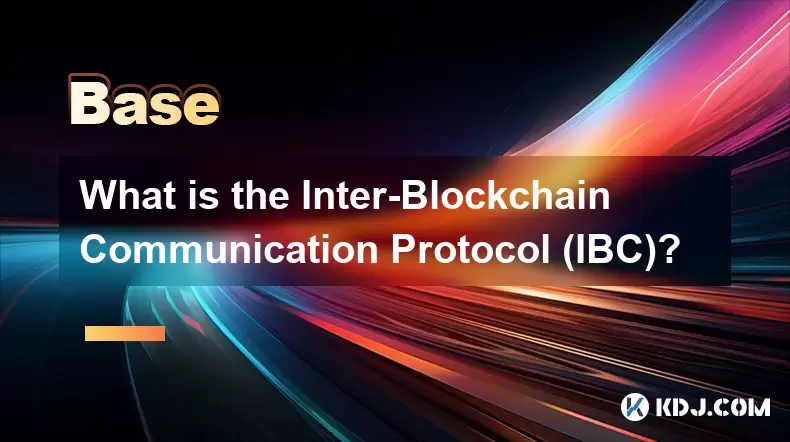
What is the Inter-Blockchain Communication Protocol (IBC)?
Jul 19,2025 at 10:43am
Understanding the Inter-Blockchain Communication Protocol (IBC)The Inter-Blockchain Communication Protocol (IBC) is a cross-chain communication protoc...
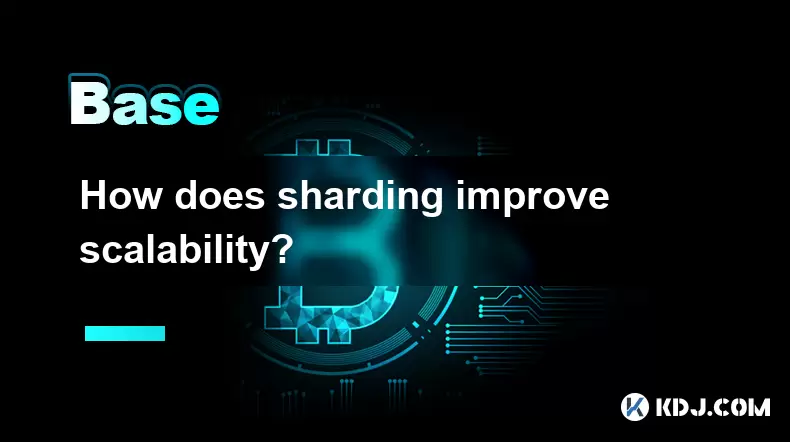
How does sharding improve scalability?
Jul 20,2025 at 01:21am
Understanding Sharding in BlockchainSharding is a database partitioning technique that is increasingly being adopted in blockchain technology to enhan...

What is the difference between CeFi and DeFi?
Jul 22,2025 at 12:28am
Understanding CeFi and DeFiIn the world of cryptocurrency, CeFi (Centralized Finance) and DeFi (Decentralized Finance) represent two distinct financia...

How to qualify for potential crypto airdrops?
Jul 23,2025 at 06:49am
Understanding What Crypto Airdrops AreCrypto airdrops refer to the distribution of free tokens or coins to a large number of wallet addresses, often u...

What is a crypto "airdrop farmer"?
Jul 24,2025 at 10:22pm
Understanding the Role of a Crypto 'Airdrop Farmer'A crypto 'airdrop farmer' refers to an individual who actively participates in cryptocurrency airdr...

What is the difference between a sidechain and a Layer 2?
Jul 20,2025 at 11:35pm
Understanding the Concept of SidechainsA sidechain is a separate blockchain that runs parallel to the main blockchain, typically the mainnet of a cryp...

What is the Inter-Blockchain Communication Protocol (IBC)?
Jul 19,2025 at 10:43am
Understanding the Inter-Blockchain Communication Protocol (IBC)The Inter-Blockchain Communication Protocol (IBC) is a cross-chain communication protoc...

How does sharding improve scalability?
Jul 20,2025 at 01:21am
Understanding Sharding in BlockchainSharding is a database partitioning technique that is increasingly being adopted in blockchain technology to enhan...
See all articles

























































































